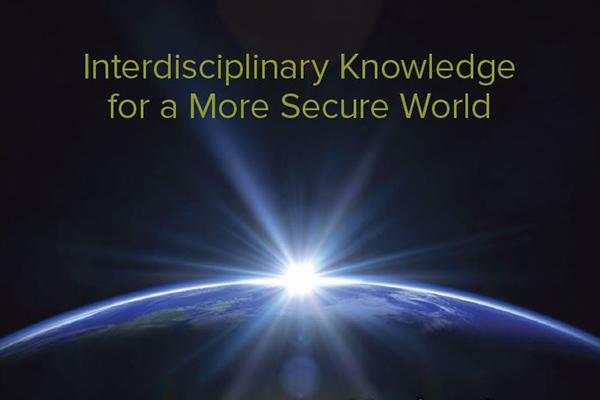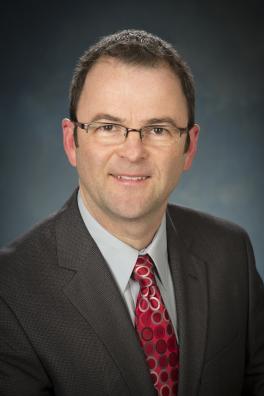Mershon Center launches new strategic plan

After a yearlong process of surveys, focus groups, and analyses, the Mershon Center for International Security Studies is launching its strategic plan for 2019 through 2023, “Interdisciplinary Knowledge for a More Secure World."
The new plan sets a new mission for the Mershon Center -- to advance interdisciplinary and collaborative approaches to international, national, and human security -- as well as three new goals:
- Produce interdisciplinary and collaborative research.
- Build an inclusive and engaged intellectual community.
- Connect our research to current challenges in international, national, and human security.
To attain these goals, the center has created three research clusters, or common substantive themes that can be tackled across disciplines, each led by three Mershon affiliates from at least two different disciplines. The research clusters include:
- American Foreign and Military Policy, led by Richard Herrmann (Political Science), Peter Mansoor (History), and Jennifer Siegel (History)
- Security and Governance, led by Olga Kamenchuk (Communication), Erik Nisbet (Communication), and Dakota Rudesill (Law)
- Recovering from Violence, led by Christopher Gelpi (Political Science), Teri Murphy (Peace Studies), and Hollie Nyseth Brehm (Sociology)
The center is also reviving its postdoctoral fellows program, employing new models for events to encourage dialogue, and creating shared collaborative space. Finally, as part of a land-grant university, Mershon will emphasize research and events that focus on substantive problems and policy-oriented initiatives in international, national, and human security.

Christopher Gelpi, director of the Mershon Center, answers some questions about the new Mershon Center strategic plan.
Q. Why did the Mershon Center need a new strategic plan? What prompted you to create it?
A. It had been some time since we had reevaluated our focus. Both the world outside Ohio State and the research interests of our Mershon affiliates have changed a great deal since we took stock at the center. I view my time as director here as a chance to rethink some of the things we do and how we approach our work.
Q. Explain the process that the Mershon Center went through to arrive at the new strategic plan.
A. We began in November 2018 with an internal staff assessment of the assets and opportunities available to Mershon in terms of relationships and connections across the university and into the wider community. Then from January into March 2019 we conducted a series of focus group discussions and interviews across a range of stakeholders including Arts and Sciences leadership, Ohio State faculty, and graduate students. Then in March and April we conducted an online survey of all Mershon affiliates. In May and June of 2019 I compiled and considered all of these responses and formulated a plan for a new way forward, and discussed the plan with Mershon faculty in July. After discussing and sharing the plan with Arts and Sciences leadership at the beginning of the fall semester, we are ready to go!
Q. The plan includes a new mission for the Mershon Center: “to advance interdisciplinary and collaborative approaches to international, national, and human security.” How did you arrive at this statement, and how is it different from the previous mission statement?
A. Previously, Mershon’s stated mission was “to advance the understanding of national security in a global context.” We will still certainly be doing so, our new mission statement more specifically emphasizes three points that are essential to the new plan. First, Mershon’s comparative advantage in promoting excellence is in being a space for interdisciplinary exchange. We face complex problems in the field of international security, and I firmly believe that we can best make progress on these challenges by embracing and engaging from multiple disciplinary perspectives. Second, if one takes interdisciplinarity seriously, then one needs to promote collaboration. Few scholars will be able to work at the cutting edge of knowledge creation in multiple fields simultaneously. As a result, we need to come together to be most effective in creating knowledge to shape a complex world. Mershon can be that collaborative space that brings people outside their individual disciplines. Finally, I wanted to emphasize Mershon’s broad and inclusive understanding of international security. That understanding includes national, international, and human security.
Q. The themes of international, national, and human security could include any number of areas of focus. The Mershon Center will be focusing on three areas: American foreign and military policy, security and governance, and recovering from violence. How did you decide to focus on those themes specifically?
A. I feel that the key to promoting interdisciplinarity is a focus on substantive problems. Theoretical, methodological, and epistemological frameworks often divide different academic disciplines. The one thing that brings us together is a substantive interest in common challenges. I listened to the focus groups, looked at the responses to the survey, and tried to find substantive areas of interest that could bring multiple Mershon affiliates together across disciplinary boundaries and would include the substantive research interests of as many affiliates as possible. I felt these clusters gave Mershon our best opportunity to be national and international leaders in these areas. Of course, the process is not a perfect reflection of all of our interests and skills, but we will have future opportunities for new research clusters to develop organically if there is energy and interest around a different substantive focus.
Q. Can you provide some examples of projects that faculty in each research cluster will be working on?
A. We are, of course, just getting off the ground, but we do already have a number of projects underway. Within the Recovering from Violence research cluster, for example, I have been working with Teri Murphy and Austin Knuppe to develop the Conflict to Peace Lab. The Lab is developing partnerships with several peacebuilding and stabilization organizations working in countries affected by political violence. We hope to support these organizations in doing effective work and hope to develop more systematic knowledge about the most effective peacebuilding practices in these contexts.
Q. Can you say a little about what it means to be interdisciplinary? How will the new strategic plan help the center better achieve the goal of collaborative and interdisciplinary research?
A. Interdisciplinarity means engagement with different kinds of questions, different ways of knowing, different kinds of evidence, and different understandings of what constitutes knowledge. Each disciplinary perspective is structured around assumptions and approaches that narrow our ways of understanding the world. These assumptions are very useful for generating deep insights into specific questions, which is the goal of most disciplinary oriented work. But when we turn our attention to broader and more complex problems that face our world, it is also important to be able to rise above these disciplinary assumptions to get a more comprehensive view of the problem. I hope that Mershon will be a place where we can do that.
Q. Ohio State is a land grant university with a mission of creating knowledge to improve the well being of state, regional, national, and global communities. How can research at the Mershon Center be connected to the overall university mission?
A. The focus of the new strategic plan on substantive challenges that our world faces in the area of national, international, and human security is in the spirit of the land grant mission that knowledge be put to work to make human lives better. While much of our focus is on challenges outside of the state of Ohio per se, the knowledge about real world problems is important for the people of Ohio to be able to engage the world as more informed citizens. Moreover, as our world becomes increasingly interconnected, the boundary between Ohio and the “outside” world grows progressively thinner.
